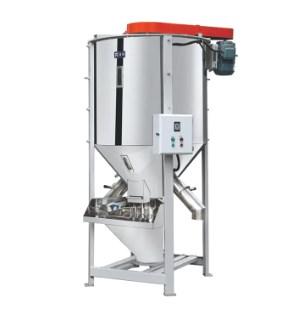The Vertical Color Mixer, a modern marvel in the world of color blending, has revolutionized the way artists, designers, and digital media professionals approach color manipulation. This innovative tool, with its unique vertical orientation, offers a fresh perspective on the traditional process of color mixing, providing users with a more intuitive and efficient method to achieve desired color outcomes.
At the heart of the Vertical Color Mixer's operation lies its design, which diverges significantly from the conventional horizontal color mixers. The vertical orientation allows for a more natural and gravity-assisted blending process, mimicking the way colors naturally mix when poured or layered in a vertical plane. This design not only enhances the user experience but also optimizes the blending process, ensuring a smoother and more even distribution of colors.
The Vertical Color Mixer's functionality begins with the selection of base colors. Users can choose from a wide range of colors, which are then loaded into the mixer's compartments. These compartments are strategically positioned along the vertical axis, allowing for a clear visual representation of the color-blending process. As colors are combined, they flow downwards, interacting with one another and creating new shades and hues.
One of the key aspects of the Vertical Color Mixer's operation is its ability to control the flow of colors. Users can adjust the rate at which colors are mixed, either by altering the speed of the mixer or by manually controlling the release of colors from their compartments. This level of control enables users to fine-tune their color blends, achieving precise results that are tailored to their specific needs.
The Vertical Color Mixer also incorporates advanced algorithms and sensors that analyze the color composition in real time. These technologies provide users with instant feedback on the color ratios and the resulting shades, allowing for adjustments to be made on the fly. This real-time analysis is a significant departure from traditional color mixing methods, which often require trial and error to achieve the desired outcome.
Another innovative feature of the Vertical Color Mixer is its compatibility with various digital platforms. Users can seamlessly integrate the mixer with design software, allowing for a seamless transition between physical and digital color blending. This integration not only streamlines the design process but also opens up new possibilities for color exploration and experimentation.
The Vertical Color Mixer's operation also extends to its ability to save and recall color recipes. Users can store their custom color blends, allowing for quick access and replication in future projects. This feature is particularly useful for designers who work with specific color palettes or need to maintain color consistency across multiple projects.
In conclusion, the Vertical Color Mixer represents a significant advancement in the field of color blending. Its vertical design, coupled with advanced technologies and user-friendly features, offers a more efficient, precise, and intuitive method for color manipulation. As the Vertical Color Mixer continues to evolve, it is poised to transform the way we approach color in design, art, and digital media, setting new standards for creativity and innovation.
The Vertical Color Mixer's operation is a testament to the power of innovation and the endless possibilities that technology brings to traditional processes. As users continue to explore the capabilities of this tool, the Vertical Color Mixer will undoubtedly play a pivotal role in shaping the future of color blending and creative expression.


